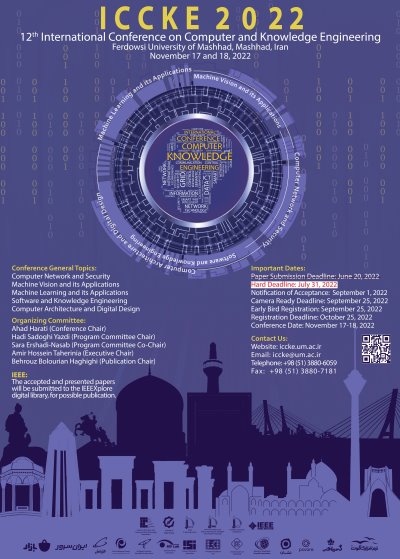0% Complete

Authors :
Keywords :
Abstract :
List of archived papers
Seyed Salar Ghazi - Haleh Amintoosi
Amin Kazempour - Jafar Tanha
Phee Wei Qin - Ervin Gubin Moung - Ali Farzamnia - Farashazillah Yahya - John Julius Danker Khoo - Maisarah Mohd Sufian
Moein Sartakhti.salimi@gmail.com - Mohammad Javad Maleki Kahaki - Ahmad Yoosofan - Seyyed Vahid Moravvej
Mahsa Zamani Tarashandeh - Amirhossein Torkanloo - Mohammad Hossein Moattar
Ali Bazghandi
Mohaddese Nemati - Shiva Mahmoudzadeh - Mehdi Teimouri
Seyed Aref Hakimzadeh - Koorush Ziarati
Arash Nasr Esfahani - Hamed Hosseini - Mehdi Tale Masouleh - Ahmad Kalhor - Hedieh Sajedi
Alireza Nezamzadeh - Mohammadreza Esmaeilidehkordi




